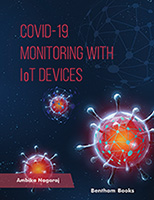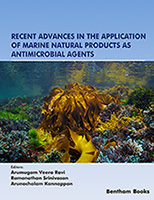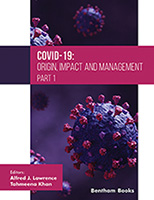Preface
Helminths can survive in the host for years in view of their ability to elude immune responses through various strategies. Therefore, a better knowledge of the immune mechanisms elicited by the host against invading helminths is fundamental for understanding pathogenesis of parasitoses as well as elaborating therapeutic measures to control or eradicate worm infections. At the same time, helminth-mediated immune response can be exploited to treat other human chronic diseases.
All these concepts will be illustrated in the present ebook, entitled “Immunity to Helminths and Therapeutic Novel Approaches”.
Karen Nava-Castro and Jorge Morales-Montor in their chapter entitled “Neuroendocrine control of the immune response during helminth infections” will elucidate how the host neuroendocrine system may favor the establishment of parasitic infections, thus emphasizing interesting perspectives into the host parasite relationship field.
Fernando Alba-Hurtado, Lorena Chávez-Guitrón, Victor Hugo del Río-Araiza, Karen Nava-Castro and Jorge Morales-Montor in their chapter entitled “The immune response during toxocariosis by Toxocara canis” will review the major immunological responses that participate in the infection development with the aim to design more accurate immunodiagnostic methods and develop new vaccines.
Sandra M. O’Neill and Sheila Donnelly in their chapter entitled “Mechanisms of immune modulation by Fasciola hepatica: the impact of innate immune cells on the developing adaptive immune response” will examine the crosstalk between F. hepatica and dendritic cells, macrophages and mast cells with special reference to the development of Th1/Th17 immune responses.
Elisabetta Profumo, Alessandra Ludovisi, Brigitta Buttari, Maria Angeles Gomez Morales and Rachele Riganò in their chapter entitled “Parasite-mediated immune modulation during the development of human cystic echinococcosis” will discuss current findings about the human immune response during the development of cystic echinococcosis and the ability of Echinococcus granulosus to regulate as well as to exploit the host’s immune system.
Luke F. Pennington and Michael H. Hsieh in their chapter entitled “The Immunobiology of Urogenital Schistosomiasis” will illustrate the immunological mechanism during S. haematobium infection and novel S. haematobium infection models for a better understanding of disease pathogenesis.
Fabrizio Bruschi and Maria Angeles Gómez-Morales in their chapter “The Translational Immunology of Trichinellosis: from Rodents to Humans” describe different aspects of the host innate and adaptive immune response to the different species of Trichinella in humans, as well as in rodents which are one of the most studied experimental models.
Ventura MT, Buquicchio R, Gatti F, Traetta FL and Iadarola G, in their chapter entitled “Anisakis simplex Infestation and Immune-Mediated Responses” report that Anisakis (A.) can trigger different kinds of hypersensitivities and, in particular, the I, III and IV type. The involvement of eosinophils in tissue lesions will also be discussed.
Miguel Angel Pineda and William Harnett in their chapter entitled “Immunomodulation by Parasitic Helminths and its Therapeutic Exploitation” summarize the current molecular mechanisms of worm infections and their potential clinical application for treatment of allergy and autoimmune diseases, like asthma, rheumatoid arthritis, inflammatory bowel disease and multiple sclerosis.
Camila Alexandrina Figueiredo, Ryan Santos Costa, Leonardo Nascimento Santos and Neuza M Alcantara Neves in their chapter entitled “Parasites-Based Immunotherapy to Treat Immune Mediated Diseases” will review the mechanisms which allow helminths to protect the host from immune-mediated diseases and the development of biological products for treatment and prophylaxis of various immunopathologies.
Thea Magrone, Emilio Jirillo and Giuseppe Miragliotta in their chapter entitled “The impact of helminths on the human microbiota: therapeutic correction of disturbed gut microbial immunity” will focus on the therapeutic potential of polyphenols that have been shown to modulate gut microbiota, also interfering with helminth development. In this context, polyphenols possess anti-inflammatory activities, even including expansion and activation of Treg cells which may attenuate immunopathology in the later phase of helminth infections.
Emilio Jirillo
Department of Basic Medical Sciences
Neuroscience and Sensory Organs
University of Bari
Bari (Italy)
Thea Magrone
Department of Basic Medical Sciences
Neuroscience and Sensory Organs
University of Bari
Bari (Italy)
&
Giuseppe Miragliotta
Department of Interdisciplinary Medicine
University of Bari
Bari (Italy)





